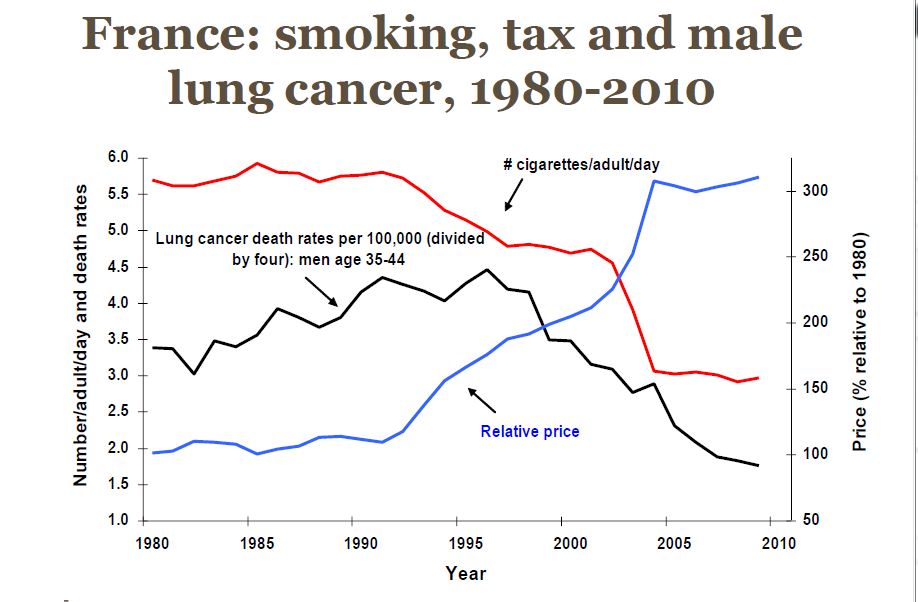Tobacco Taxes for Lung Health!
In an effort to raise awareness about the negative consequences of smoking tobacco products, the World Health Organization (WHO), along with many other global partners, celebrates World No Tobacco Day every year on May 31st. This year, the theme is tobacco and lung health. In today’s blog, we’re expanding the campaign’s primary focus area—the negative impact smoking has on lung health—to look at economic burden of tobacco-related lung disease, and how fiscal policy tools, such as taxation can help reduce smoking rates and thus, tobacco-related lung disease.
According to the WHO, lung diseases, such as chronic respiratory diseases, tracheal, bronchus, and lung cancer, are the sixth leading cause of death globally. Lung diseases attributed to tobacco use account for approximately 40% (3.3 million) of all smoking-related deaths. Smoking leads to significant negative externalities, as the burden on lung health is not only faced by the smoker, but also members of their community who do not smoke. Deaths from lung diseases due to secondhand smoke exposure equate to approximately 545,000 deaths, or around 44.7% of all deaths from the exposure.
The consequences of lung disease from smoking are not just health-related, but are also economic. These consequences include, but are not limited to, large healthcare costs from treating lung diseases, a significant loss of productivity, poverty, and health inequalities. The total economic cost of tobacco use globally is US$1.85 trillion, or 1.8% of the world’s annual gross domestic product (GDP).
To reduce both smoking and its economic burden, the most effective policies are those that directly reduce the demand for it. There are several effective tobacco control policies to accomplish this; however, the most effective and cost-effective method is to increase taxes on tobacco products. Evidence from multiple global studies has shown that a 10% increase on a pack of cigarettes would reduce the demand by about 4% in high-income countries and 5% in low- and middle-income countries.
In recent research, studies show a connection between lung cancer and tobacco taxes. Jha (2012) found that between 1980 and 2010, the number of cigarettes consumed daily per adult decreased as a result of an increase in relative price due to taxation. By 2010, the relative price increased by over 300% from 1980. At the same time, the number of cigarettes consumed per day by adults fell from approximately 5.7 cigarettes to 3.1. And as a result, the lung cancer death rate among men decreased from 3.4 per 100,000 in 1980 to 1.9 in 2010.
Source: Jha, 2012
Overall, WHO recommends a few “best practices” for countries in adopting their own tobacco taxation policies.
- The tobacco excise should be at least 70% of the final consumer price.
- Tax increases should exceed increases in consumer prices and incomes, to reduce the affordability of tobacco products.
- Taxes should be designed to minimize incentives for tobacco users to switch to cheaper brands or products in response to tax increases.
- Tobacco tax administration is essential in reducing opportunities for tax avoidance and tax evasion.
Despite the strong evidence about the harms of smoking on lung health, the role tobacco control plays in improving lung health still remains underestimated, both economically and thematically. Thus, the purpose of World No Tobacco Day is to raise awareness on this issue. We encourage you all to involve yourselves in the conversations and participate in the campaign by visiting the website and following the activity on social media!

